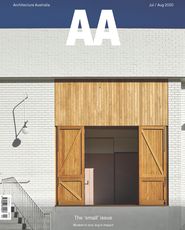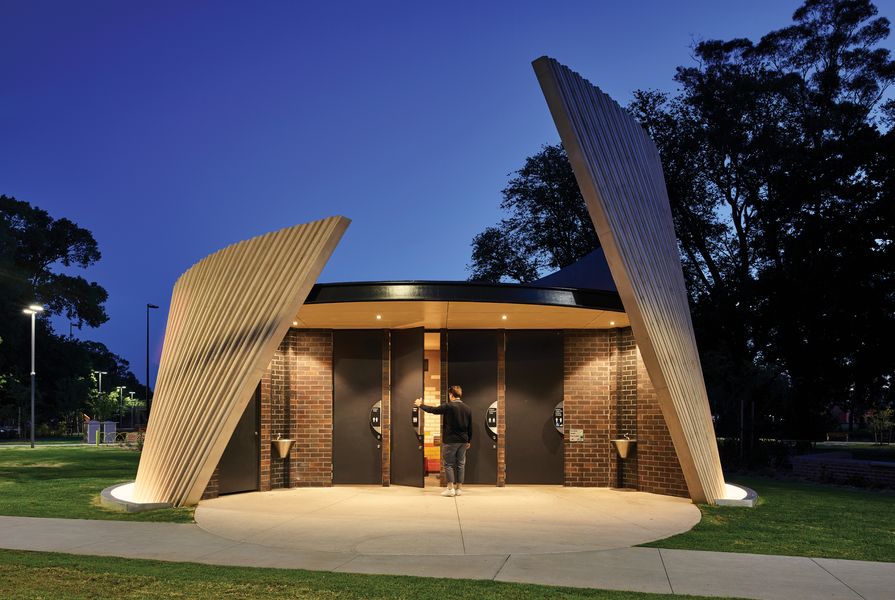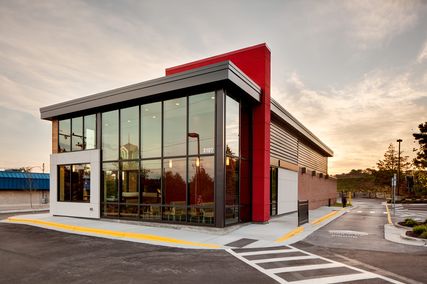The idea of gender-neutral toilets has spilled over from academic debate and mainstream media commentary into architectural briefs. The boundaries of shared bathrooms in public spaces, workplaces and schools have become a flashpoint for divisive arguments about safety and diversity, sex and gender, politics and society. Even the Australian Prime Minister has been drawn into the sudden flood of toilet talk, bristling at the appearance of “inclusion and diversity” signs encouraging staff to “use the bathroom that best fits your gender identity” in the offices of his own department.1
Public commentary on these matters often generates more heat than light, so it’s worth working toward some points of clarification: what are we talking about, where are we talking about, and can we move from rhetoric to redesign?
In terms of “where” we are talking about, debates about gender-neutral toilets are relatively insular and generally assume a context of pre-existing and near- universal access. In many parts of the global south, however, there is an acute need for more accessible and safe toilets, particularly in the case of sex-segregated facilities.2 The lack of such facilities is widely recognized as a factor limiting the ability of women and girls to participate fully in public life. There is a certain arrogance, or perhaps ignorance, in assuming that in the global north, we have moved on entirely from the safety and privacy concerns of women and girls.3
Shared toilets and the spaces that surround them are therefore important, for practical, political and social purposes – and these purposes can be difficult, if not impossible, to separate.
With regard to “what” we are talking about, this is an area hampered by a frequent and unhelpful conflation of terms. When we talk about a toilet, do we mean – literally – the singular, functional object of a toilet, or are we also talking about the space surrounding it, including, say, entry ways, mirrors, sinks or urinals? Is a urinal gender-neutral?
Moreover, the “what” question pushes us to consider whether the term “gender-neutral” is a potential misnomer. Do we really mean “mixed sex,” for instance, and would such terminology have the same appeal? There is a difference between gesturing toward the expectations and norms associated with the social construction of gender and acknowledging physiological functions associated with biological sex.
And if we are talking about the shared spaces around which, or through which, people access a toilet in public or semi-public places, what would “gender- neutrality” look like? Any attempt at neutrality would have to first confront and challenge the established default for the built environment to conform to male norms, with men’s needs standing in for the experience of all human beings.
A return to the Prime Minister’s unwanted intervention into toilet politics offers an instructive example. Scott Morrison’s own motivations were rightly decried, but a plaque simply stating that existing bathroom spaces are now inclusive does little to promote real inclusion. As design researcher Gail Ramster and colleagues have shown, such superficial or rhetorical attempts at inclusion can in fact create new forms of exclusion.4 And those who miss out are often marginalized people, including women and girls, whose needs, the authors argue, are frequently not centred, even in the provision of standard female toilets. They suggest direct-access individual and self-contained toilet and washing facilities as one way forward.
There are surely many other ways forward that move beyond rhetoric to rethinking and radical redesign – design that genuinely fosters inclusion and takes into account the inequalities that women and girls face around the world.
1. “Scott Morrison vows to ‘sort out’ gender-inclusive toilet sign posted at his department,” ABC News website, 29 August 2019, abc.net.au/news/2019-08-29/scott- morrison-vows-to-take-down-gender-inclusion-bathroom- sign/11462552 (accessed 18 May 2020).
2. Water Aid, WSUP and UNICEF, Female-friendly public and community toilets: A guide for planners and decision makers , October 2018, washmatters.wateraid.org/sites/ g/files/jkxoof256/files/female-friendly-public-and- community-toilets-a-guide.pdf (accessed 18 May 2020).
3. Rachel Hosie, “Unisex changing rooms put women at danger of sexual assault, data reveals,” The Independent , 2 September 2018, independent.co.uk/life-style/women/ sexual-assault-unisex-changing-rooms-sunday-times- women-risk-a8519086.html (accessed 18 May 2020).
4. Gail Ramster, Clara Greed and Jo-Anne Bichard, “How inclusion can exclude: The case of public toilet provision for women,” Built Environment , April 2018, vol 44 no 1, 52–76.
Credits
- Project
- Geelong Ring Road Rest Area
- Architect
- BKK Architects
Melbourne, Vic, Australia
- Project Team
- Julian Kosloff, Stephanie Bullock, Tim Black, Simon Knott, Madeleine Beech, Julian Faelli
- Architect
- VicRoads Landscape and Urban Design
- Consultants
-
Builder
MMAP Constructions
Concrete supply Melbourne Precast Concrete
Landscape architect VicRoads Landscape and Urban Design
Services engineer BRT Consulting
Structural engineer Perrett Simpson
- Aboriginal Nation
- Built on the land of the Wadawurrung people of the Kulin nation
- Site Details
-
Location
Geelong,
Vic,
Australia
- Project Details
-
Status
Built
Category Public / cultural
Type Amenities, Small projects
Credits
- Project
- Dandenong Public City Park Amenities
- Architect
- BKK Architects
Melbourne, Vic, Australia
- Project Team
- Tim Black, Jillian Raleigh, Vaughan Howard
- Consultants
-
Builder
ADM Structures
Structural engineer ACOR
- Aboriginal Nation
- Built on the land of the Wurundjeri, Bunurong and Boon Wurrung peoples of the Kulin nation
- Site Details
- Project Details
-
Type
Amenities
Source

Discussion
Published online: 8 Mar 2021
Words:
Meaghan Tyler
Images:
Dan Preston,
Derek Swalwell,
John Gollings
Issue
Architecture Australia, July 2020


















